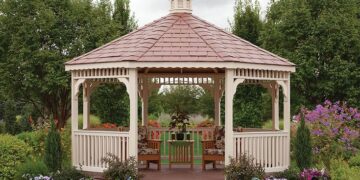South Central Park is really the piece of the recreation area that New York City travelers visit most frequently. The entryways are a short stroll from Times Square toward the north, with Central Park South. What these guests for the most part don’t understand is that Central Park is a tremendous metropolitan woods with roughly 25,000 overviewed and recorded trees.
Gather more stuff here
Imperial Paulownia
This photograph shows the paulownia trees focusing on the horizon of Central Park South and it shadows the entry to seventh Avenue. They enhance the little slope inside the craftsman’s entryway and before the Hexer’s jungle gym.
Regal Paulownia is a presented elaborate that has become deeply grounded in North America. It is otherwise called princess tree, sovereign tree, or paulownia. It has a tropical structure with extremely enormous catalpa-like leaves. The two species are not related. The tree is a tremendous seeder and develops quickly. Tragically, in view of this capacity to develop anyplace and at a fast rate, it is presently viewed as an obtrusive colorful tree species. You are urged to painstakingly establish trees.
Gather more stuff about What Is Memory Trace Upload
Hackberry
On one corner toward the north and east of Tavern-on-the-Green, is huge and wonderful hackberry (see photograph). Directly across the cleared West Drive is Sheep Meadow. Hackberry is likewise present in enormous numbers in Central Park South’s Ramble, a huge 38-section of the land lush region.
Hackberry has an elm-like appearance and is, as a matter of fact, connected with elms. Hackberry wood has never been utilized broadly due to its delicate quality and practically prompt propensity to spoil when presented to the components. Be that as it may, C. occidentalis is a generous metropolitan tree and is known to be lenient toward most soil and dampness conditions.
Eastern hemlock
This little eastern hemlock is situated in the shocking Shakespeare Garden. Shakespeare Garden is the main stone nursery in Central Park. The nursery was initiated in 1916 on the 300th commemoration of Shakespeare’s demise and elements plants and blossoms that emulate those in the nursery at the artist’s home in Stratford-upon-Avon.
The eastern hemlock has a “gesturing” structure characterized by its appendages and pioneers and can be perceived at significant stretches. Some position this tree among “quality plants” to add to the scene. As per Guy Sternberg at Native Trees in North American Landscapes, they are “enduring, refined in character and no slow time of year.” Unlike most conifers, eastern hemlock should have the shade given by hardwoods to replicate. Sadly, the stands of these trees are being harmed by the hemlock wooly adelgid.
Eastern redbud
Toward the north and behind the Metropolitan Museum, on a traffic intersection near 85th Street, blossoms quite possibly of the most lovely redbud you’ll at any point see. It enhances an exceptionally lavish square driving into Central Park.
The redbud is a little, conceal cherishing tree and is generally not seen for the majority of the year. However, the tree truly sparkles in late winter (perhaps the earliest blossoming plant), with leafless parts of maroon buds and pink blossoms developing directly from the storage compartment and appendages. Blossoming is before long followed by new green leaves that turn a profound, pale blue-green tone and are particularly heart-formed. C. Canadensis frequently delivers an enormous yield of 2-4 inch seeds that are unusable in a few metropolitan scenes.
Established broadly as an elaborate, the redbud’s normal reach is from Connecticut to Florida and west to Texas. It is a quickly developing tree and blossoms inside a couple of long periods of planting.
Saucer magnolia
This saucer is simply off Magnolia East Drive and straightforwardly behind the Metropolitan Museum. Many magnolia assortments are established in Central Park, however, the saucer magnolia is by all accounts the one magnolia effectively and frequently tracked down in Central Park.
The saucer magnolia is a little tree that develops to a level of 30 feet. A productive developer, its blossoms are huge and cover the uncovered trunks of the tree not long before the leaves arise. Its cup-to-flagon formed blossoms line Central Park with pale pink sprouts becoming a striking shade of pink toward its base.
The saucer magnolia is one of the earliest blossoming trees to sprout. In gentle environments, including the Deep South, it blossoms in pre-spring and as late as mid-spring in colder areas. Any place it develops, the saucer magnolia is an eagerly awaited first indication of spring.
Eastern red cedar
Cedar Hill in Central Park is named for its cedars, including the Eastern Red Cedar. Cedar Hill is toward the south of the Metropolitan Museum and simply over the meadow.
Eastern red cedar is definitely not a genuine cedar. It is juniper and is the most generally circulated local conifer in the eastern United States. It is tracked down in each state east of the 100th meridian. This solid tree is quick to involve oftentimes cleared regions where its seeds are spread by cedar waxwings and different birds that partake in the beefy, blue seed cones.
Eastern red cedar (Juniperus virginiana), otherwise called the eastern portion of the United States. Eastern redcedar develops on soils, going from dry stone outcrops to wet damp land.
Dark Tupelo
This enormous, triple-trunked dark tupelo is in Central Park’s Glade. The Glade, only north of Conservatory Water, is a downturn with delicate, level territory that makes for an ideal spot to unwind – and for dark tupelo to develop.
Blackgum or dark tupelo is as a rule (however not generally) related to wet regions as is recommended by its Latin variety name Nyssa, the name for a Greek legendary water sprite. Southern honey bee managers prize the tree’s nectar and sell tupelo honey for a premium. The tree is ostentatious in fall with splendid red leaves ornamented with the blue natural products of female trees.
Dark tupelo develops from southwestern Maine to southern Florida and west past the Mississippi River. Dark tupelo (Nyssa sylvatica var. sylvatica) is additionally well known as black gum, sourgum, pepperidge, tupelo, and tupelogum.
Colorado Blue Spruce
This Colorado Blue Spruce is found only south of The Glade. It is perhaps of the most gorgeous tree on the east side of Central Park.
Horticulturists suggest Colorado Blue Spruce for planting as a yard tree over most others. It develops very well all through the northern United States despite the fact that its regular reach is restricted to the Rocky Mountains. This tree has a striking blue tone, is established all through the United States and Europe, and is a most loved Christmas tree.
Blue tidy (Picea pungens) is additionally called Colorado blue tidy, Colorado tidy, silver tidy, and Pino genuine. It is a sluggish developing, seemingly perpetual tree of medium size that, due to its evenness and variety, is broadly planted as a fancy. It is the state tree of Colorado.
Horsechestnut
Focal Park is a horse chestnut safeguard. They are all over the place. This specific red-blossoming horse chestnut is becoming only west of Conservatory Water. Studio Water was a hacked-out building project-turned-lake. It is currently a lake utilized by model boat devotees.
The horse chestnut is local to Europe and the Balkans and not exactly a chestnut. The sparkly, cleaned nuts they produce look palatable however are quite severe and noxious. Horse-chestnut’s bloom has been depicted as a “candelabra of the divine beings” as a result of its rich blossom panicle. The tree develops to 75 feet and can be 70 feet wide.
Aesculus hippocastanum is entirely only from time to time established in the United States. It is beset with a “smudge” that causes unattractive sautéing of leaves by summer. The tree fills in an upstanding oval shape. The leaves are palmate and made out of 7 flyers that turn a decent yellow in the fall.
Cedar of Lebanon
This is one tree in the woods of Lebanon Cedars at the entry of Pilgram Hill. Pilgram Hill is an inclined glade driving back to the Conservatory Water and home to a bronze sculpture of The Pilgrim. This slope is named after the representative figure who recognizes the arrival of the Pilgrims at Plymouth Rock.
The Cedar-of-Lebanon is a scriptural tree that has interested tree sweethearts for quite a long time. It is a delightful conifer and can carry on for 1,000 years in its local Turkey. Researchers accept that the cedar was the incredible tree of Solomon’s sanctuary.
The Lebanon Cedar has a sharp, four-sided needle, pretty much an inch long and in spike shoots of 30 to 40 needles for each prod. Every one of the four sides of the needle has minuscule specked white lines of stomata apparent under amplification.








